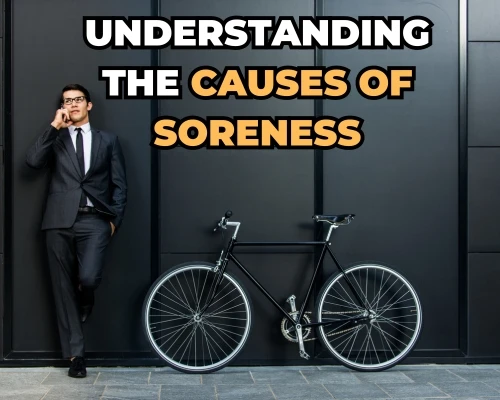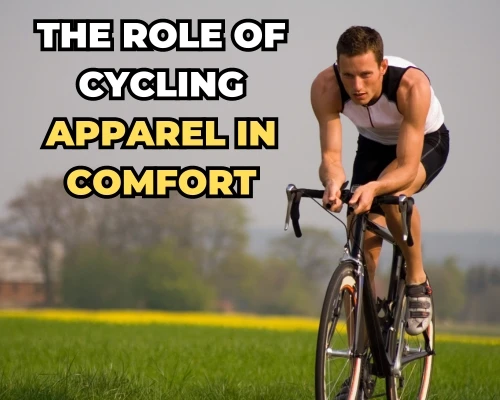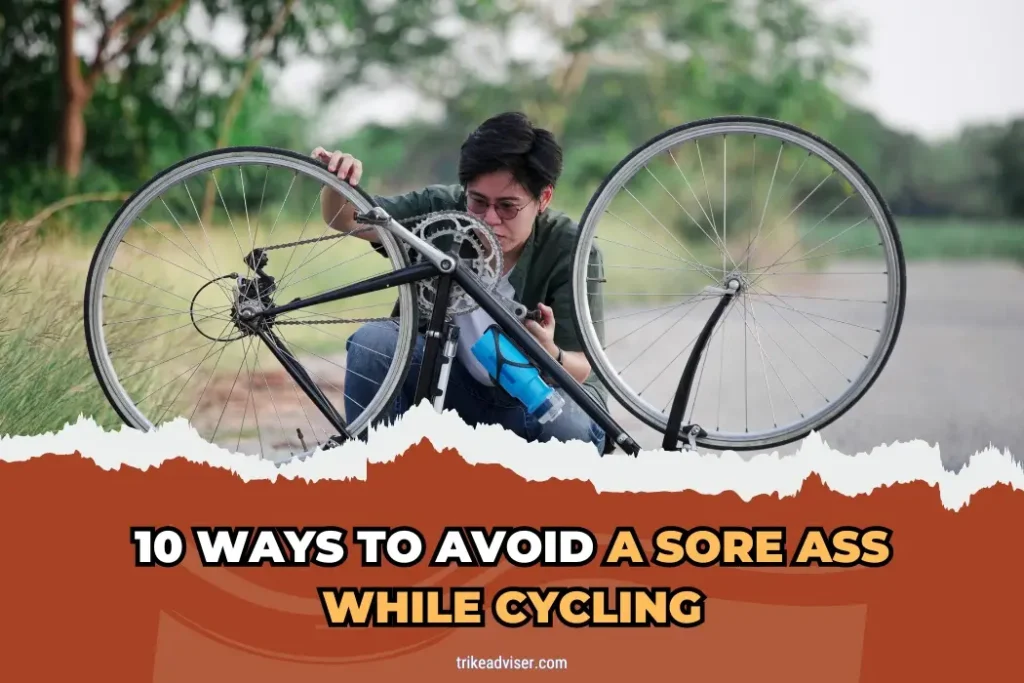Almost every cyclist has been there. You’re out for a ride, feeling the breeze, when suddenly, your enjoyment turns to discomfort. Yes, we’re talking about that dreaded sore ass. It’s not just an inconvenience; it becomes a barrier to longer rides and better experiences.
You might think it’s inevitable, part of the sport. It’s not. Relief exists, and it doesn’t require magic. Wondering how to make those long rides more comfortable? Or perhaps how to step off your bike without wincing? The solution isn’t as elusive as it seems.
Addressing a few key aspects can transform your ride from painful to pleasurable. Curious? Stick around. We’ve got 10 proven strategies to keep your rear end happy. No gimmicks, just practical advice. Ready to change your cycling experience for the better?
10 Ways To Avoid A Sore Ass while Cycling
Invest in Cycling-specific Shorts
Invest in well-fitted cycling-specific shorts. A quality chamois pad is crucial. It reduces discomfort and absorbs shock. Not all shorts are created equal. Choose ones with a seamless, anti-bacterial pad. This isn’t a luxury; it’s a necessity.
Proper Bike Fit
Ensure your bike is properly fitted. A good fit distributes weight evenly, preventing excess pressure on sit bones. Every adjustment, from saddle height to handlebar reach, matters. Consult a professional. Comfort equals efficiency and longer rides without pain.
Choose the Right Saddle
Select a saddle suited to your anatomy. Contrary to intuition, ultra-light, thin saddles can outperform heavily padded ones. It’s about support, not cushioning. The right saddle makes hours on the bike feel effortless.
Experiment with Saddle Designs
Explore different saddle designs. Cut-outs, twin noses, or channels might offer the relief you need. These features alleviate pressure points. What works for one cyclist might not work for another. Test various designs.
Quality Cycling Shorts
Avoid cheap cycling shorts. Opt for quality ones with a superior pad. This can prevent a sore behind. The investment pays off in comfort and durability. Good shorts also manage moisture and reduce skin irritation.
Use Emollient or Chamois Cream
Apply emollient or chamois cream to the pad and perineum before riding. It reduces friction, preventing saddle sores. This simple step can significantly enhance comfort on long rides.
Gradually Build Up Cycling
Increase your cycling distance gradually. Allow your body, including your undercarriage, to adapt. Start with short rides and slowly add mileage. This approach reduces the risk of soreness and injury.
Stand Up Regularly
Stand out of the saddle every 10-15 minutes. Do this even on flat terrain. It gives your butt a break and restores blood flow. This can be a game-changer on long rides.
Maintain Cleanliness
Keep clean to avoid infections and skin irritations. These issues can amplify soreness. Post-ride, change out of damp clothing quickly. Use gentle, fragrance-free soap for sensitive areas.
Avoid Extra Underwear
Do not wear additional underwear under your cycling shorts. Especially avoid cotton. It retains moisture, leading to discomfort and potential skin problems. Cycling shorts are designed to be worn alone for a reason.
Following these tips can transform your cycling experience. Say goodbye to discomfort and hello to longer, more enjoyable rides.
Understanding the Causes of Soreness

Cycling, a joy and a passion for many, sometimes brings along an unwelcome companion – soreness. Let’s delve into the why and how, guiding you to a more comfortable ride.
Anatomy of Cycling Discomfort
The Pressure Points
Cycling soreness isn’t just about muscle fatigue. It often stems from pressure, friction, and moisture. These forces conspire against the areas in contact with the saddle – mainly the sit bones and the perineum.
The Friction Factor
Pedaling isn’t a friction-free movement. It subjects your skin and the contact areas to continuous rubbing. Coupled with sweat and heat, this friction can lead to chafing, redness, and the dreaded saddle sores – painful skin lesions that nobody wants.
Weight Distribution Woes
How you sit and how your bike supports you can make or break your ride. Incorrect saddle height or improper handlebar reach throws off weight distribution. This imbalance puts unnecessary stress on your soft tissues, inviting discomfort and sores.
Contribution of Bike Setup and Riding Style to Soreness
The Setup Saga
Getting your bike setup right is more than just aesthetics; it’s about biomechanics. A saddle too high or too low, handlebars misplaced – these aren’t just minor nuisances. They’re prime culprits in the story of soreness. They disturb the natural weight distribution, focusing too much pressure on areas that aren’t meant to handle it.
The Saddle Choice
Choosing a saddle is a personal journey. What works for one may not work for another. Saddles with cut-outs, twin noses, or channels aren’t just design quirks. They’re carefully thought-out features to alleviate pressure points and improve blood flow, enhancing your comfort.
Gear Up Right
Quality cycling shorts with a well-fitted chamois pad do wonders. They reduce friction, manage moisture, and prevent the skin irritation that leads to soreness. Add a dab of emollient or chamois cream to reduce friction further, keeping the skin hydrated and happy.
Ride Right
Lastly, how you ride matters. A sudden increase in cycling intensity or duration can shock your system, leading to soreness. Gradually building up your stamina, along with regular breaks to stand up and stretch, can keep the blood flowing and pressure off, making your rides more enjoyable and less painful.
The Science of Cycling Ergonomics

Ergonomic Principles for Bike Fitting
Bike fitting seems complex, right? It’s all about comfort, efficiency, and power. No single guide fits all because everyone’s different. Seat position, handlebar height, and reach greatly affect how you feel and perform. Road bikes to mountain bikes, each needs a unique setup. The goal? Boost comfort, enhance power, and keep fatigue at bay.
Impact of Posture and Positioning on Cycling Comfort
Interaction between rider and bike is key. Even slight changes can boost comfort. Proper posture prevents pains and aches. Saddle height, tilt, and handlebar position all play big roles. Correct saddle height means a slight knee bend. Handlebars should match rider preferences. Good fitting optimizes weight distribution and joint alignment, easing discomfort.
Adjusting your bike and posture might seem like small steps. But, they lead to rides that feel good and go long. Comfort becomes part of every journey, not just a wish.
The Role of Cycling Apparel in Comfort

Cycling gear, more than just attire. It’s a game-changer for comfort and performance. Here’s how technology and design come into play, especially for those long hauls.
Technology behind Cycling Wear for Comfort and Performance
Think of cycling wear as high-tech armor. It’s crafted not just to fit but to enhance. Moisture-wicking fabrics are the norm, pulling sweat away to keep you dry. Breathability keeps your temperature steady, crucial for long rides. Then there’s the fit – ergonomic, moving as you move. Socks aren’t left behind, with materials like Coolmax and Dri-Release fighting moisture and odor.
Comparing Materials and Designs: What Works Best for Long Rides
On extended rides, comfort is king. But so are durability and performance. Enter padded bike shorts. They’re not just padding; they’re your seat’s best friend, designed to prevent chafing and soak up road vibration. The padding varies – from gel to foam, tailored to how and where you ride.
Compression gear steps up too, aiding muscle performance and delaying fatigue. It’s like a constant muscle hug, boosting blood flow and supporting your ride.
Let’s not forget the core of cycling comfort – breathability, moisture management, and that perfect fit. Together, they make sure comfort sticks with you, mile after mile.
Choosing the right cycling apparel is a balance. It’s about matching technology with your body’s needs, ensuring every piece from socks to jerseys plays its part. The result? You end the ride as fresh as you started, ready for the next adventure.
Strength and Flexibility Training for Cyclists
Building strength and flexibility isn’t just about muscle; it’s about mastering the ride. Here’s how cyclists can turn these elements into allies for a smoother journey.
Exercises to Enhance Comfort and Reduce the Risk of Soreness
Power Building
Cycling demands more than just pedaling power. Incorporate deadlifts, squats, and chin-ups into your routine. These exercises bolster legs, glutes, and even the upper body. It’s not just about brute force. Balance and posture benefit, too, shielding you from injuries.
Core Focus
Off-bike, target your core with planks and side planks. These aren’t just tough; they’re transformative. They build endurance, stability, and the kind of core strength that turns good rides into great ones. You’ll notice the difference in your posture and comfort.
Importance of Core Strength and Flexibility for Cyclists
The Core of Cycling
A robust core does more than you think. It supports your upper body, easing the load on your back. This means less pain and more pleasure as you push the pedals. Planks, leg raises, and twists aren’t just exercises; they’re your ticket to a stable, efficient ride.
Flexibility: The Hidden Hero
Flexibility is the unsung hero of cycling. It allows you to maintain that perfect, aerodynamic posture without strain. Focus on the hips, lower back, and hamstrings. Lack of flexibility isn’t just uncomfortable; it’s a shortcut to strain and injury.
As an Amazon Associate, I earn from qualifying purchases, at no additional cost to you. Read Our Affiliate Disclosure.

